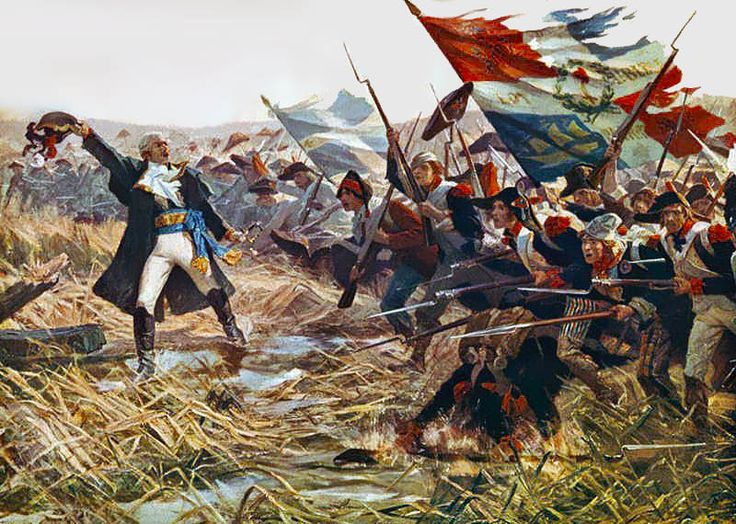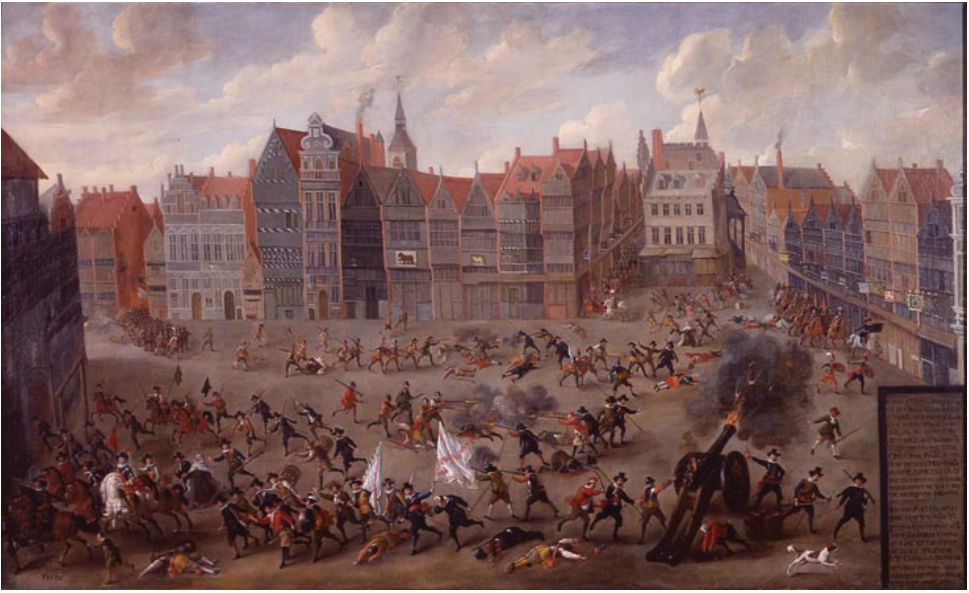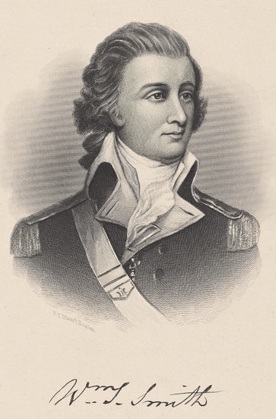|
Battle Of Neerwinden (1793)
The Battle of Neerwinden (18 March 1793) saw a First French Republic, Republican French army led by Charles François Dumouriez attack a Coalition army commanded by Prince Josias of Saxe-Coburg-Saalfeld. The Coalition army of the Habsburg monarchy together with a small contingent of allied Dutch Republic troops repulsed all French assaults after bitter fighting and Dumouriez conceded defeat, withdrawing from the field. The French position in the Austrian Netherlands swiftly collapsed, ending the threat to the Dutch Republic and allowing Austria to regain control of its lost province. The War of the First Coalition engagement was fought at Neerwinden, located east of Brussels in present-day Belgium. After Dumouriez's victory at Battle of Jemappes, Jemappes in November 1792, the French armies rapidly overran most of the Austrian Netherlands. Rather than driving the Austrians to the west bank of the Rhine River, Dumouriez and the French government became preoccupied with a war wi ... [...More Info...] [...Related Items...] OR: [Wikipedia] [Google] [Baidu] |
Low Countries Theatre Of The War Of The First Coalition
The Low Countries theatre of the War of the First Coalition, also known as the Flanders campaign, was a series of campaigns in the Low Countries conducted from 20 April 1792 to 7 June 1795 during the first years of the War of the First Coalition. As the French Revolution radicalised, the revolutionary National Convention and its predecessors broke the Catholic Church's power (1790), abolished the monarchy (1792) and even executed the deposed king Louis XVI of France (1793), vying to spread the Revolution beyond the new French Republic's borders, by violent means if necessary. The First Coalition, an alliance of reactionary states representing the Ancien Régime in Central and Western Europe – Habsburg Austria (including the Southern Netherlands), Prussia, Great Britain, the Dutch Republic (the Northern Netherlands), Hanover and Hesse-Kassel – mobilised military forces along all the French frontiers, threatening to invade Revolutionary France and violently restore the m ... [...More Info...] [...Related Items...] OR: [Wikipedia] [Google] [Baidu] |
Jean-Baptiste Cyrus De Valence
Jean-Baptiste Cyrus de Timbrune de Thiembronne, Comte de Valence (; 22 September 1757 – 4 February 1822) commanded French troops during the French Revolutionary Wars and the Napoleonic Wars. A nobleman, he joined the French Royal Army as a captain of cavalry in 1778. By the time of the French Revolution he commanded a cavalry regiment. Valence led troops at Valmy in 1792 and was soon appointed to command the Army of the Ardennes. He led the right wing at Neerwinden. Becoming involved in Charles Francois Dumouriez's failed plot to seize control of the army, he defected in April 1793. Valence returned to France during an amnesty and was elected to the Sénat conservateur in 1805. Emperor Napoleon named him to lead an infantry division in the Peninsular War where he led Polish troops at Ciudad Real and Almonacid in 1809. He commanded a heavy cavalry division during the French invasion of Russia leading his horsemen at Borodino and Vyazma. He served with Paul Grenier and Hor ... [...More Info...] [...Related Items...] OR: [Wikipedia] [Google] [Baidu] |
Hussar
A hussar, ; ; ; ; . was a member of a class of light cavalry, originally from the Kingdom of Hungary during the 15th and 16th centuries. The title and distinctive dress of these horsemen were subsequently widely adopted by light cavalry regiments in European armies during the late 17th and 18th centuries. By the 19th century, hussars were wearing jackets decorated with braid plus shako or Busby (military headdress), busby fur hats and had developed a romanticized image of being dashing and adventurous. Several modern armies retain the designation of hussars for Armored unit, armored (tank) units. In addition, a number of mounted units survive which wear historical hussar uniforms on parade or while providing Bodyguard, ceremonial escorts. Historically, the term derives from the cavalry of late medieval Kingdom of Hungary (1301–1526), Hungary, under Matthias Corvinus, with mainly Serb warriors. Etymology Etymologists are divided over the derivation of the word ''huss ... [...More Info...] [...Related Items...] OR: [Wikipedia] [Google] [Baidu] |
Jäger (military)
Jäger, Jager, or Jaeger (), meaning "hunter" in German, may refer to: * Jäger (surname), also Jaeger and Jæger, including a list of people and fictional characters with the surname Fictional characters *Jaeger, in the television series '' Altered Carbon'' *Jaeger, a group of vampire hunters in the anime series '' Sirius the Jaeger'' *Jaegers, a group in the ''Akame ga Kill!'' manga and anime *Jaegers, piloted robots used to fight alien monsters in the 2013 film '' Pacific Rim'' and the 2018 sequel *Jaeger (alt. Jäger; Yeager), refers to a family from the manga series Attack on titan and it’s anime adaptation anime series of the same name. Known member of the family: Eren Yeager, Grisha Yeager, Zeke Yeager In biology *Jaeger, the North American name for the smaller species of the skua family of seabirds *Jaeger 70 Jaeger 70 (also known as Munson) is a hybrid of two American grape species, '' Vitis lincecumii'' and '' Vitis rupestris'' developed by Hermann Jaeger (1 ... [...More Info...] [...Related Items...] OR: [Wikipedia] [Google] [Baidu] |
Anton Sztáray
Anton Sztáray de Nagy-Mihály (, 1732 or 1740, Kassa, Hungary – 23 January 1808, Graz, Austrian Empire) was a Hungarian count in the Habsburg military during Austria's Wars with the Ottoman Empire, the French Revolutionary Wars and the Napoleonic Wars. He commanded an autonomous corps in the 1799 campaign in southwestern Germany, with which he protected the main Austrian army's right (northern) flank as it advanced across Swabia. At the first action of this campaign, the Battle of Ostrach, he led 10,000 men across Swabia, covering the northernmost flank of the Austrian and Imperial army. Subsequently, his troops guarded the Neckar valley. At the Battle of Wiesloch, (3 December), he drove the French from the right bank of the Rhine and relieved Philippsburg fortress. After the Austrian defeat at Battle of Hohenlinden on 3 December 1800, Sztáray was given the task of raising the Bohemian-Moravian Legion. In 1801 he was appointed Commanding General in Inner Austria. He wa ... [...More Info...] [...Related Items...] OR: [Wikipedia] [Google] [Baidu] |
Henri Christian Michel De Stengel
Henri Christian Michel de Stengel (11 May 1744 – 28 April 1796) joined the French royal army, rapidly rose to general officer rank during the French Revolutionary Wars, and was mortally wounded in Italian campaign while serving in General Napoleon Bonaparte's army. Early career Born in Neustadt an der Weinstraße in the Electorate of Bavaria in 1744, Stengel joined the Bavarian army's ''Palatine Guards'' in 1758. He entered the French army in 1760 and fought in the Seven Years' War. He became a lieutenant in 1762, a captain in 1769, and a major in 1788. After the French Revolution he was appointed colonel of the 1st Hussar Regiment. French Revolutionary Wars Soon after, Stengel served as a general of brigade in the Army of the North at the Battle of Valmy in September 1792. Still under the command of Charles Dumouriez, he fought at the Battle of Jemappes in November 1792. Later that year, he led Dumouriez's advance guard in successful actions at Mechelen (Malines) and Voro ... [...More Info...] [...Related Items...] OR: [Wikipedia] [Google] [Baidu] |
Mechelen
Mechelen (; ; historically known as ''Mechlin'' in EnglishMechelen has been known in English as ''Mechlin'', from where the adjective ''Mechlinian'' is derived. This name may still be used, especially in a traditional or historical context. The city's French name, ', had also been used in English in the past (in the 19th and 20th centuries); however, this has largely been abandoned. Meanwhile, the Dutch-derived ' began to be used in English increasingly from the late 20th century onwards, even while ''Mechlin'' remained still in use (for example, a ''Mechlinian'' is an inhabitant of this city or someone seen as born-and-raised there; the term is also the name of the city dialect; as an adjective ''Mechlinian'' may refer to the city or to its dialect.) is a city and municipality in the province of Antwerp in the Flemish Region of Belgium. The municipality comprises the city of Mechelen proper, some quarters at its outskirts, the hamlets of Nekkerspoel (adjacent) and Battel ... [...More Info...] [...Related Items...] OR: [Wikipedia] [Google] [Baidu] |
Leuven
Leuven (, , ), also called Louvain (, , ), is the capital and largest City status in Belgium, city of the Provinces of Belgium, province of Flemish Brabant in the Flemish Region of Belgium. It is located about east of Brussels. The municipality itself comprises the deelgemeente, sub-municipalities of Heverlee, Kessel-Lo, Leuven proper, Wilsele, Wijgmaal and part of Haasrode, Leuven, Haasrode and Korbeek-Lo, Leuven, Korbeek-Lo. It is the eighth largest city in Belgium, with more than 100,244 inhabitants. Leuven has been a university city since 1425. This makes it the oldest university city in the Low Countries. KU Leuven, the largest Dutch-speaking university in the world and the largest university in the Low Countries (and thus also Belgium's largest university), has its flagship campus in Leuven. The city is home of the headquarters of Anheuser-Busch InBev, the world's largest beer brewer and sixth-largest fast-moving consumer goods company. History Middle Ages The earli ... [...More Info...] [...Related Items...] OR: [Wikipedia] [Google] [Baidu] |
Antwerp
Antwerp (; ; ) is a City status in Belgium, city and a Municipalities of Belgium, municipality in the Flemish Region of Belgium. It is the capital and largest city of Antwerp Province, and the third-largest city in Belgium by area at , after Tournai and Couvin. With a population of 565,039, it is the List of most populous municipalities in Belgium, most populous municipality in Belgium, and with a metropolitan population of over 1.2 million people, the country's Metropolitan areas in Belgium, second-largest metropolitan area after Brussels. Definitions of metropolitan areas in Belgium. Flowing through Antwerp is the river Scheldt. Antwerp is linked to the North Sea by the river's Western Scheldt, Westerschelde estuary. It is about north of Brussels, and about south of the Netherlands, Dutch border. The Port of Antwerp is one of the biggest in the world, ranking second in Europe after Rotterdam and List of world's busiest container ports, within the top 20 globally. The city ... [...More Info...] [...Related Items...] OR: [Wikipedia] [Google] [Baidu] |
Francisco De Miranda
Sebastián Francisco de Miranda y Rodríguez de Espinoza (28 March 1750 – 14 July 1816), commonly known as Francisco de Miranda (), was a Venezuelan military leader and revolutionary who fought in the American Revolutionary War, the French Revolution and the Spanish American wars of independence. He is regarded as a precursor of South America's liberation from the Spanish Empire, and remains known as the "First Universal Venezuelan" and the "Great Universal American". Born in Caracas in the Viceroyalty of New Granada into a wealthy family, Miranda left to pursue an education in Madrid in 1771 and subsequently enlisted in the Spanish army. In 1780, following Spain's entry into the American Revolutionary War, he was sent to Cuba and fought the British at Siege of Pensacola, Pensacola. Accused of espionage and smuggling, he fled to the United States in 1783. Miranda returned to Europe in 1785 and travelled through the continent, gradually formulating his plans for Spanish Americ ... [...More Info...] [...Related Items...] OR: [Wikipedia] [Google] [Baidu] |
Army Of The North (France)
The Army of the North or is a name given to several historical units of the French Army. The first was one of the French Revolutionary Armies that fought with distinction against the First Coalition from 1792 to 1795. Others existed during the Peninsular War, the Hundred Days and the Franco-Prussian War. Campaigns 1791 to 1797 At the creation of the Army of the North on 14 December 1791, the government of the Kingdom of France appointed Jean-Baptiste Donatien de Vimeur, Comte de Rochambeau, as its commander. Rochambeau was replaced in May 1792, and he retired from service. The suspicious government of the First French Republic later charged him with treason and he barely escaped execution. In 1792–1794, the guillotine awaited military commanders who either failed, belonged to the nobility, or displayed insufficient revolutionary zeal. In the Army of the North these unfortunates included Nicolas Luckner, Adam Custine, and Jean Houchard. Under Charles François Dumourie ... [...More Info...] [...Related Items...] OR: [Wikipedia] [Google] [Baidu] |
Liège
Liège ( ; ; ; ; ) is a City status in Belgium, city and Municipalities in Belgium, municipality of Wallonia, and the capital of the Liège Province, province of Liège, Belgium. The city is situated in the valley of the Meuse, in the east of Belgium, not far from borders with the Netherlands (Maastricht is about to the north) and with Germany (Aachen is about north-east). In Liège, the Meuse meets the river Ourthe. The city is part of the ''sillon industriel'', the former industrial backbone of Wallonia. It still is the principal economic and cultural centre of the region. The municipality consists of the following Deelgemeente, sub-municipalities: Angleur, Bressoux, Chênée, Glain, Grivegnée, Jupille-sur-Meuse, Liège proper, Rocourt, Liège, Rocourt, and Wandre. In November 2012, Liège had 198,280 inhabitants. The metropolitan area, including the outer commuter zone, covers an area of 1,879 km2 (725 sq mi) and had a total population of 749,110 on 1 January 2008. ... [...More Info...] [...Related Items...] OR: [Wikipedia] [Google] [Baidu] |







